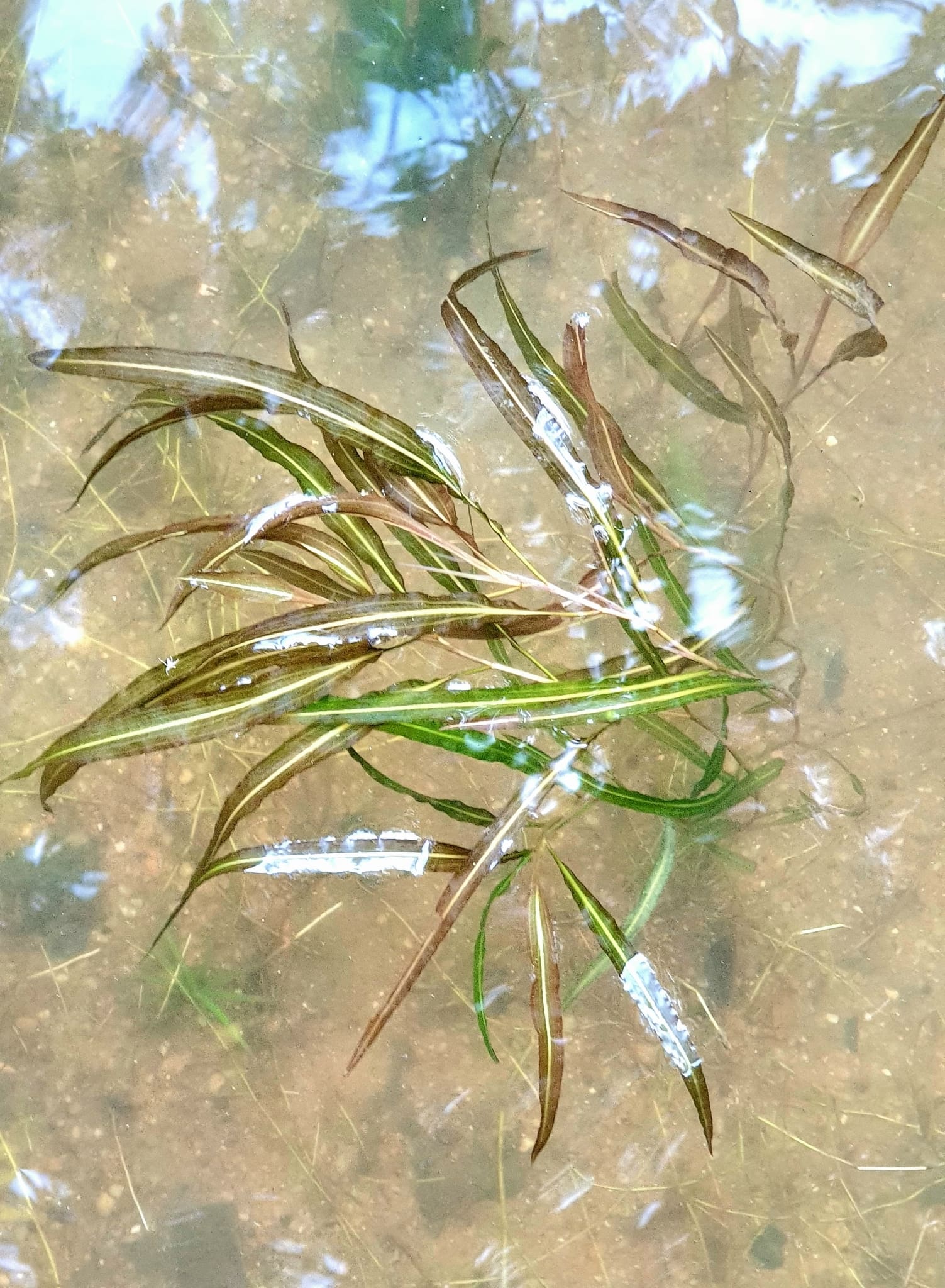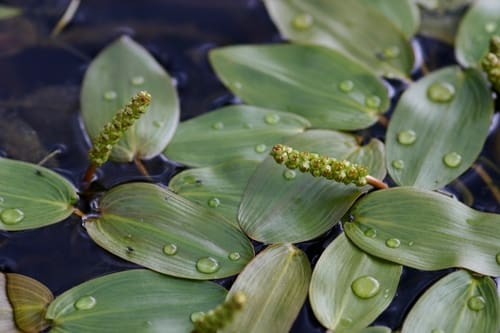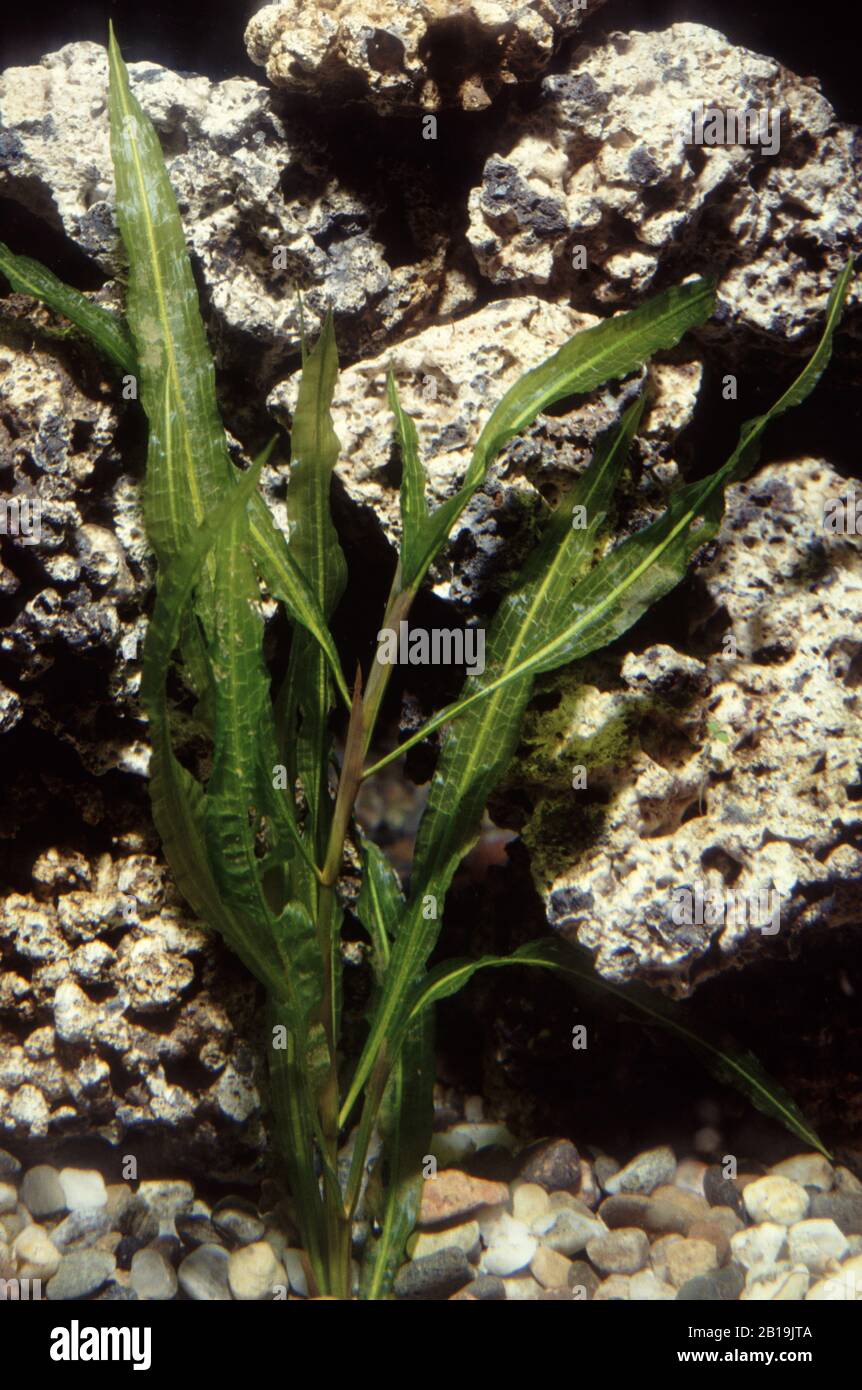In the scientific study of hydrobiology, different species of aquatic plants play significant roles: they can impact the balance of aquatic ecosystems, influence water quality, and serve as biological indicators. The plant known as Potamogeton Wrightii, commonly classified as an aquatic weed, is no exception. This article offers an in-depth analysis of Potamogeton Wrightii – its classification, habitat, role in its respective environment, and related research findings. You’ll be enlightened on the specific characteristics of this aquatic weed, helping you understand both its importance as an individual organism and its place in the broader context of aquatic botanical life.

Understanding Aquatic Weeds
Aquatic weeds are a broad category of plants that thrive in water bodies. These may include both floating varieties, which reside on the water’s surface, and submerged assortments that thrive beneath the water’s surface. Some common types of aquatic weeds include hyacinth, duckweed, and chara. While some, like the hydrilla and milfoil, are invasive, others like the lotus and water lily are valued for their ornamental beauty.
Types of aquatic weeds
There are three main categories of aquatic weeds: floating, submerged and emergent. Floating aquatic weeds, like water hyacinth and duckweed, float on the water’s surface. Submerged aquatic weeds, on the other hand, reside under the water’s surface. Examples include bladderwort and eurasian watermilfoil. Emergent aquatic weeds, such as cattails and bulrush, are rooted in soil but may extend above the water’s surface.
Common characteristics of aquatic weeds
Aquatic weeds share certain characteristics that allow them to thrive in water bodies. These include highly variable leaf shapes and sizes, ability to photosynthesize under water, and the presence of specialized tissue known as aerenchyma that helps in oxygen circulation within the plant. Furthermore, many aquatic weeds have adapted to reproduce both sexually and asexually, ensuring their survival even in challenging environments.
Impacts of aquatic weeds on aquatic ecosystems
Aquatic weeds play a significant role in aquatic ecosystems. They not only provide habitat and food to a variety of life forms but also play a crucial role in nutrient cycling in the ecosystem. However, overpopulation of certain species could clog waterways, hinder aquatic activities, disrupt native fauna and adversely affect water quality, leading potentially to significant ecological imbalances.
Basic Description of Potamogeton Wrightii
Potamogeton Wrightii, a type of submerged aquatic weed, is a perennial aquatic herb. This type of aquatic weed is variable in appearance but generally has an underwater stem that sends up spikes of greenish flowers above the water surface during the blooming period.
Scientific classification of Potamogeton Wrightii
In the scientific classification, Potamogeton Wrightii falls under the Plantae kingdom. The species belongs to the Tracheophyta division and falls within the order Alismatales. The family of the plant is Potamogetonaceae, with genus Potamogeton.
Common names of Potamogeton Wrightii
Potamogeton Wrightii is often referred to colloquially as Wright’s Pondweed, with Pondweed being a general term for members of the Potamogeton family.
Geographical distribution of Potamogeton Wrightii
Potamogeton Wrightii is a relatively widespread species globally, found primarily in North America, particularly throughout various regions of the United States and Canada. The plant tends to favor habitats such as shallow ponds and slow-moving streams.

Physical Characteristics of Potamogeton Wrightii
Potamogeton Wrightii is a robust plant typically characterized by its long submerged stems and slight floating leaves
Leaf structure
The plant’s leaves are thin and slightly see-through, often greenish in color. They are generally elliptic or ovate, and arranged alternately along the stem. The edges of the leaves are often wavy in appearance.
Flower appearance
The flower of the Potamogeton Wrightii is typically greenish in color. It forms on emergent spikes that extend above the water surface and contain numerous small, inconspicuous flowers.
Root system
As for the root structure, Potamogeton Wrightii has a sprawling root system that anchors the plant in the underlying substrate. This root system plays a significant role in nutrient uptake from the substrate.
Growth Habit and Reproduction of Potamogeton Wrightii
Potamogeton Wrightii is a hardy species that can grow in a variety of environments, including both fresh and saline waters. It can grow rapidly under favorable conditions.
Growth conditions
Potamogeton Wrightii prefers light conditions but is capable of growing in shaded areas as well. The plant is amenable to a wide range of soil conditions extending from sandy to clayey substrates.
Reproduction strategies
Reproduction in Potamogeton Wrightii can occur both sexually and asexually. Flowers, when pollinated, form seeds that can be transported by water currents. Furthermore, portions of the stem, when broken, can develop into new plants.
Growth rate
Under optimal conditions, Potamogeton Wrightii can establish a significant presence in a water body in relatively quick time due to its rapid growth rate.

Ecological Role of Potamogeton Wrightii
Potamogeton Wrightii plays an important ecological role. It provides valuable shelter and food for various aquatic creatures and aids in nutrient cycling within the aquatic ecosystem.
Role in aquatic food chains
Potamogeton Wrightii serves as a primary producer in the aquatic food chain. It provides food for herbivorous fish and insects, which are then ingested by larger predators, establishing a long food chain within the water body.
Habitat provision to aquatic life
By providing shelter and a breeding ground for various species of fish and invertebrates, Potamogeton Wrightii plays a significant role in maintaining biodiversity within an aquatic ecosystem.
Nutrient cycling
Through its root system, Potamogeton Wrightii uptakes nutrients from the water and substrate, facilitating nutrient cycling in the ecosystem.
Germination and Life Cycle of Potamogeton Wrightii
Potamogeton Wrightii has a complex life cycle that features various stages, from seed germination to maturity and reproduction.
Germination process
The life cycle of Potamogeton Wrightii starts with seed germination, which occurs when water currents carry the seeds to a suitable substrate.
Early development and growth
Following germination, a young plant starts to grow, developing its leaves and root system. During this time, Potamogeton Wrightii may spread rapidly under favorable conditions.
Flowering and seed production
The plant matures and begins to produce flowers that will eventually develop into seeds. Pollination typically occurs through wind or water transfer.
Senescence and death
Eventually, the plant reaches senescence, a phase marked by reduced growth and the eventual death of the plant. However, due to their reproductive strategies, remnants of the plant can give rise to new plants.

Benefits and Uses of Potamogeton Wrightii
Potamogeton Wrightii has various beneficial properties that make it valuable in a diverse range of fields, from soil erosion prevention to water treatment.
Role in preventing soil erosion
Potamogeton Wrightii, with its sprawling root system, plays a significant role in preventing soil erosion in water bodies by stabilizing the substrate.
Use in water treatment
The plant’s ability to absorb nutrients and pollutants from the water makes it a potential candidate for use in natural water treatment processes.
Potential medicinal uses
Though not widely documented, there are speculations around the potential medicinal uses of Potamogeton Wrightii, primarily in traditional medicine practices.
Use in ecology and environmental studies
Potamogeton Wrightii serves as an excellent model for studying aquatic ecosystems, plant evolution, and habitat conservation strategies due to its widespread distribution and robust growth habits.
Negative Impacts and Problems Associated with Potamogeton Wrightii
Despite its benefits, Potamogeton Wrightii can pose problems when its growth is left unchecked. Overpopulation can lead to significant challenges, both ecologically and economically.
Effects on water sanitation
Although the plant can absorb pollutants, its decaying matter can decrease the water’s oxygen levels, leading to water hypersaturation and the eventual death of aquatic forms.
Impeding water traffic and fishing activities
Dense growth of Potamogeton Wrightii can obstruct waterways, impeding traffic and fishing activities, resulting in economic losses.
Negative impacts on other aquatic species
Unchecked growth of Potamogeton Wrightii can lead to competition for resources that could adversely affect other aquatic species.

Control and Management of Potamogeton Wrightii
Effective management of Potamogeton Wrightii is crucial to preventing its negative impacts. Control measures can be physical, chemical, or biological methods.
Physical control methods
Physical control measures typically involve manual removal of the plant, often through mechanical means such as cutting, pulling, or dredging.
Chemical control options
Chemical control techniques utilize herbicides to inhibit the growth of Potamogeton Wrightii. These chemicals, however, must be used responsibly to avoid damaging non-target organisms.
Biological control agents
Biological control agents such as certain fish species or waterfowl can help control the plant’s spread by feeding on it.
Current Research on Potamogeton Wrightii
There is ongoing research on various aspects of Potamogeton Wrightii, from understanding its growth habits and ecological roles to exploring potential future applications.
Studies on growth habits
Studies are underway to understand the factors influencing Potamogeton Wrightii’s growth patterns, including the impact of environmental factors such as sunlight, temperature, and nutrient availability.
Research on ecological roles
Research into Potamogeton Wrightii’s ecological role can shed light on its interactions with other species, its contributions to aquatic food chains, and overall impacts on water quality.
Potential future applications
Current research is also exploring the plant’s potential future applications, such as its use in bioindicator studies, phytoremediation projects, and even drug discovery.
In conclusion, Potamogeton Wrightii is an integral component of many water bodies worldwide. Understanding its characteristics, growth habits, ecological impacts, and potential uses is vital for managing its population and optimizing its benefits to ecosystems and human society.